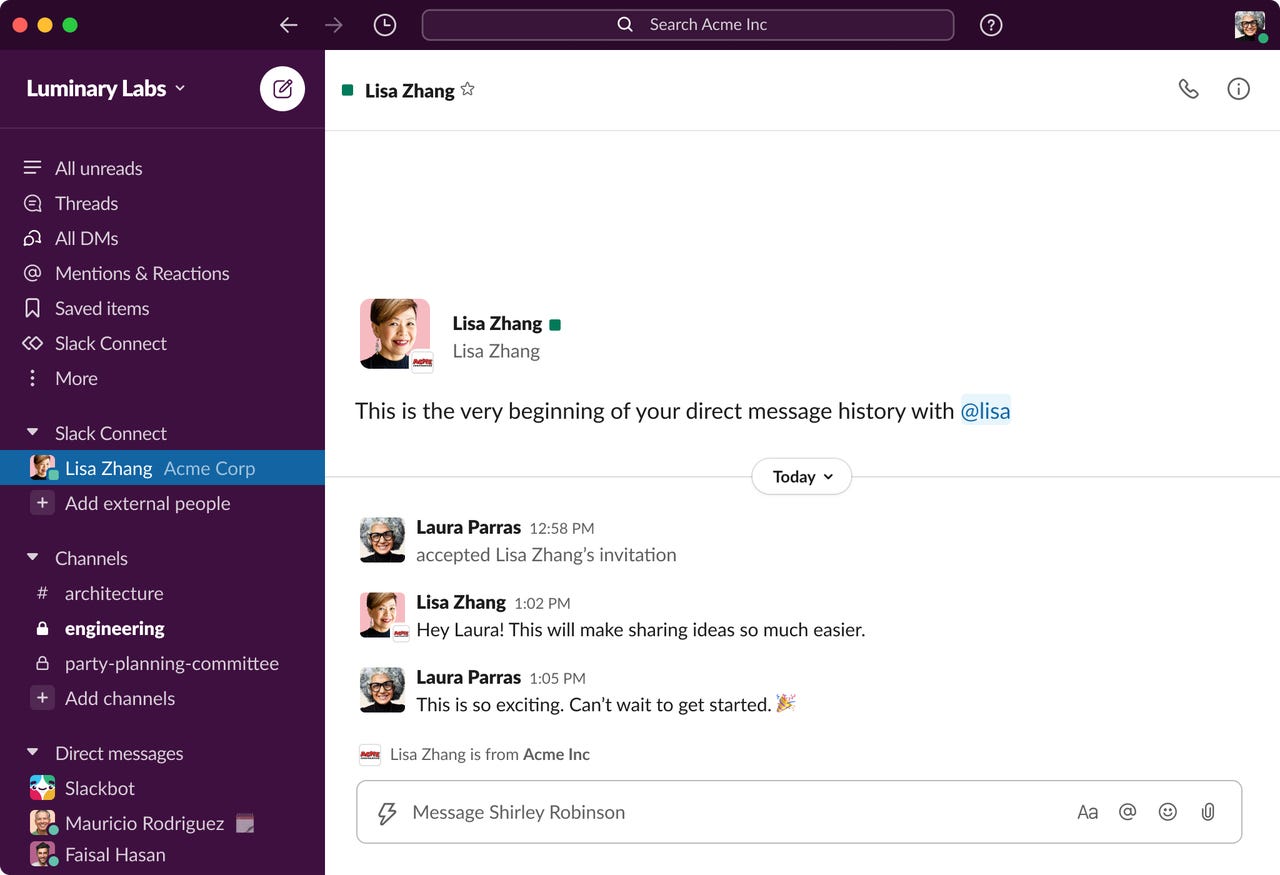Slack rethinks direct messaging plans after backlash


Connect DMs let users communicate with trusted external partners on Slack.
Only hours after having made Slack Connect DMs generally available, the platform is already rethinking its strategy amid growing concern that the new feature opens the door to unwanted messaging, and even harassment or abuse.
First announced last October, Connect DMs let users communicate with trusted external partners on Slack, where the platform previously only enabled direct messaging between employees within the same organization.
Digital Transformation
The new feature is available by default to all members, and is part of Slack Connect – a capability that lets businesses bring together up to 20 separate organizations in the same shared space for real-time collaboration. According to the platform, Slack Connect is already used by more than 74,000 paid customers across 153 countries.
SEE: Top 100+ tips for telecommuters and managers (free PDF) (TechRepublic)
In its original format, Slack Connect DM enables employees to compose an invitation message to be sent along with a Slack link to any external collaborator's email address; once the recipient accepts the invite, the pair can start chatting directly on the platform. Verified companies are denoted with a checkmark to let employees know they're connecting with a trusted organization; and invites expire after 14 days, after which a new link can be sent.
The feature's general availability, which was announced earlier this week, came with strong backlash from social media users highlighting the intrusiveness of a "DM anyone" plan. Slack's response has been to point out that there is an option to disable the feature by unchecking the "Enable Slack Connect for direct messages" preference.
More worrying for some, however, is the fact that Connect DMs could enable workplace harassment and abuse. Various users effectively stressed that the option of customizing the invitation text when trying to connect comes with a heightened risk of spam.
SEE: The future of work: Tools and strategies for the digital workplace (ZDNet/TechRepublic special feature) | Download the free PDF version (TechRepublic)
This is especially the case considering Slack's known reluctance to enable blocking on the platform, which has previously led activists to call for more stringent policies when it comes to protecting victims of harassment.
Slack has now changed its plan, with the company's vice president of communications and policy Jonathan Prince announcing, only hours after Connect DMs were made generally available, that the company will remove the ability to customize messages when inviting someone to direct message on the platform.
This means that users will still be able to invite employees that are external to their organization to connect – but they won't be able to add a specific message to their invitation.
SEE: Project management: How to cope with massive uncertainty and get stuff done
"After rolling out Slack Connect DMs this morning, we received valuable feedback from our users about how email invitations to use the feature could potentially be used to send abusive or harassing messages," tweeted Prince.
"We are taking immediate steps to prevent this kind of abuse, beginning with the removal today of the ability to customize a message when a user invites someone to Slack Connect DMs.
"We made a mistake in this initial rollout that is inconsistent with our goals for the product and the typical experience of Slack Connect usage. As always, we are grateful to everyone who spoke up, and we are committed to fixing this issue."
Slack, which was acquired late last year by collaboration platform Salesforce for $27.7 billion, has seen its revenue and user base jump in the past months due to the global switch to remote working caused by the COVID-19 pandemic. With 156,000 total paid customers, the platform's total revenue for the year reached $902.6 million, an increase of 43% year-on-year.